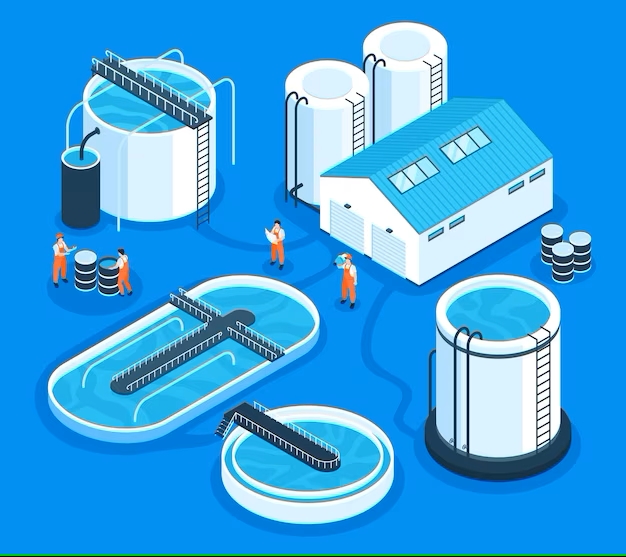
“Water Desalination Systems: Turning Seawater into Lifesaving Freshwater”
Introduction
Water scarcity is a growing concern worldwide, and the need for sustainable solutions to provide clean and freshwater is paramount. Water desalination systems have emerged as a critical technology to address this challenge. In this comprehensive guide, we will explore the fascinating world of water desalination, including solar desalination systems, reverse osmosis water systems, industrial reverse osmosis water systems, and their crucial role in the healthcare sector, specifically dialysis water treatment systems. Discover how these systems work, their applications, and their role in mitigating the global water crisis.
The Global Water Crisis
Access to safe and clean drinking water is a fundamental human right, yet nearly 2.2 billion people globally lack access to safe drinking water. Population growth, urbanization, pollution, and climate change have exacerbated the global water crisis. As a result, finding innovative and sustainable solutions to ensure a freshwater supply is essential.
Water Desalination Systems
Water desalination systems offer a promising solution to the water scarcity challenge. These systems are designed to remove salt and impurities from seawater, brackish water, or even wastewater, rendering it safe for drinking, agricultural use, and industrial applications.
Solar Desalination Systems
Solar desalination systems utilize solar energy to power the desalination process. Here’s how they work:
Solar Collection: Solar panels or collectors harness the sun’s energy and convert it into electricity or heat.
Desalination Process: This energy is used to drive the desalination process, typically through techniques like distillation or reverse osmosis.
Freshwater Production: The desalination process separates freshwater from saltwater, producing clean and drinkable water.
Solar desalination is a sustainable and eco-friendly solution, making it particularly valuable in regions with abundant sunlight.
Reverse Osmosis Water Systems
Reverse osmosis (RO) is a widely used desalination technique that relies on a semipermeable membrane to separate salts and impurities from water. The process involves applying pressure to the saltwater, causing it to pass through the membrane, while the clean freshwater is collected on the other side.
RO systems are highly efficient and are often used in residential, commercial, and industrial settings, providing a steady supply of fresh water.
Industrial Reverse Osmosis Water Systems
Industrial reverse osmosis water systems are designed for large-scale desalination and water treatment. They are commonly used in industries like manufacturing, food processing, and power generation, where a reliable source of high-quality water is essential for operations.
These systems are capable of removing a wide range of contaminants, ensuring that the water meets strict quality standards for industrial use.
Dialysis Water Treatment System
Dialysis is a life-saving medical procedure for individuals with kidney failure. It requires a consistent supply of ultra-pure water to ensure the safety and effectiveness of the treatment.
Dialysis water treatment systems, often utilizing reverse osmosis technology, provide the necessary water quality for hemodialysis, ensuring that patients receive safe and high-quality care.
The Advantages of Water Desalination Systems
Water desalination systems offer several significant advantages:
Drought Mitigation: Desalination provides a reliable source of freshwater, even in drought-prone regions.
Reduced Dependence on Freshwater Sources: By tapping into seawater and brackish water, desalination reduces the stress on traditional freshwater sources.
Sustainable Energy Sources: Solar desalination systems utilize renewable energy, making them environmentally friendly.
Public Health and Healthcare: Dialysis water treatment systems ensure the safety of dialysis patients, preventing complications and infections.
Industrial Applications: Industrial RO systems support manufacturing, food production, and power generation by delivering the required water quality.
The Challenges of Water Desalination
While water desalination systems offer promising solutions, they also come with challenges:
Energy Consumption: Desalination can be energy-intensive, especially in large-scale industrial systems.
Environmental Impact: Disposal of concentrated brine and environmental concerns associated with desalination facilities can be significant.
Cost: The initial setup and maintenance costs of desalination systems can be substantial.
Infrastructure and Distribution: Ensuring the efficient distribution of desalinated water to communities in need can be a logistical challenge.
Conclusion
Water desalination systems, including solar desalination, reverse osmosis, industrial reverse osmosis, and dialysis water treatment, have emerged as powerful tools to combat the global water crisis. These systems provide reliable access to safe and clean drinking water, helping to mitigate the challenges posed by water scarcity, pollution, and climate change.
As we continue to address the challenges of water desalination, it’s crucial to find sustainable solutions and invest in research and innovation to make these technologies more energy-efficient and environmentally friendly.
To support the ongoing efforts in water desalination and sustainability, consider contributing to or partnering with organizations and initiatives working to expand access to freshwater resources. By doing so, we can collectively make a difference in providing clean and safe drinking water to those in need.
If you’re interested in learning more about water desalination systems or contributing to related projects, feel free to reach out and take the first step towards a more sustainable and water-secure future. Together, we can turn the tide on the global water crisis.